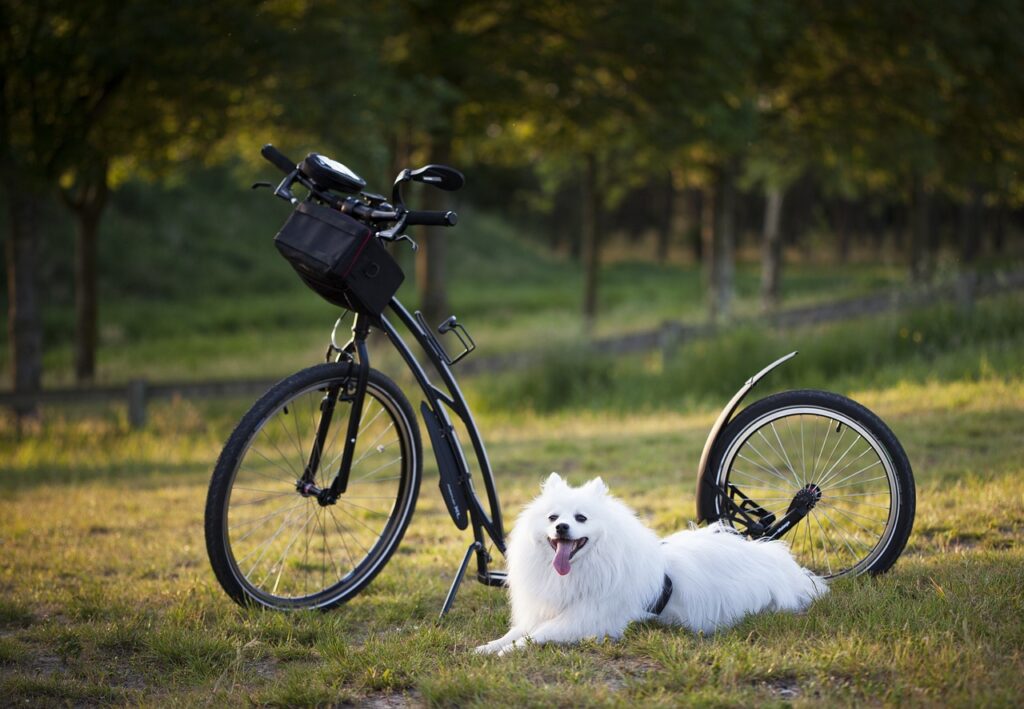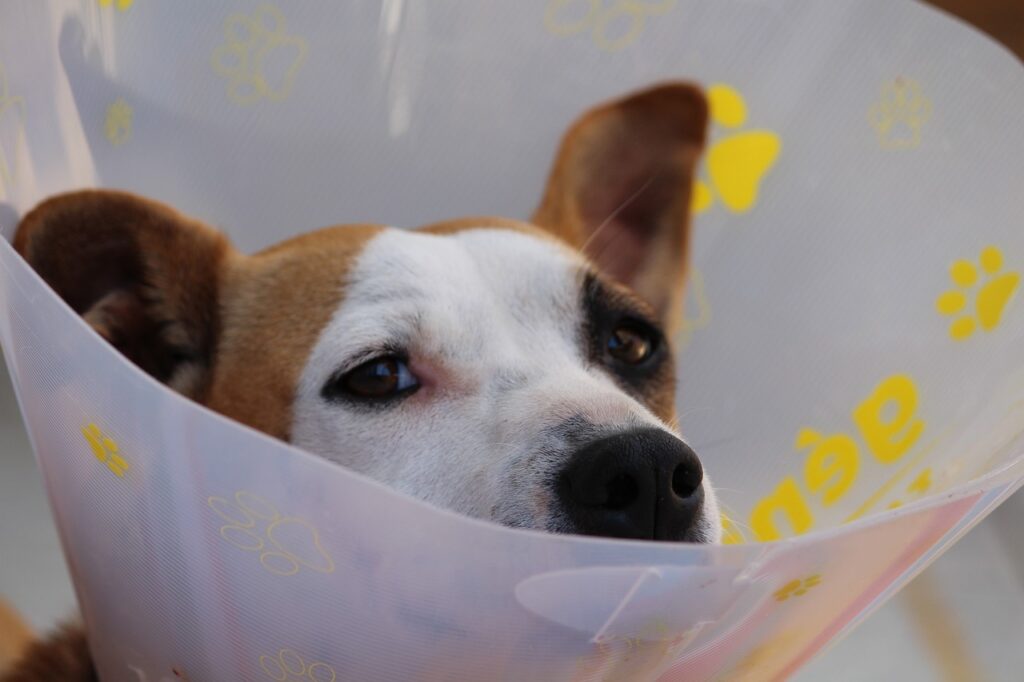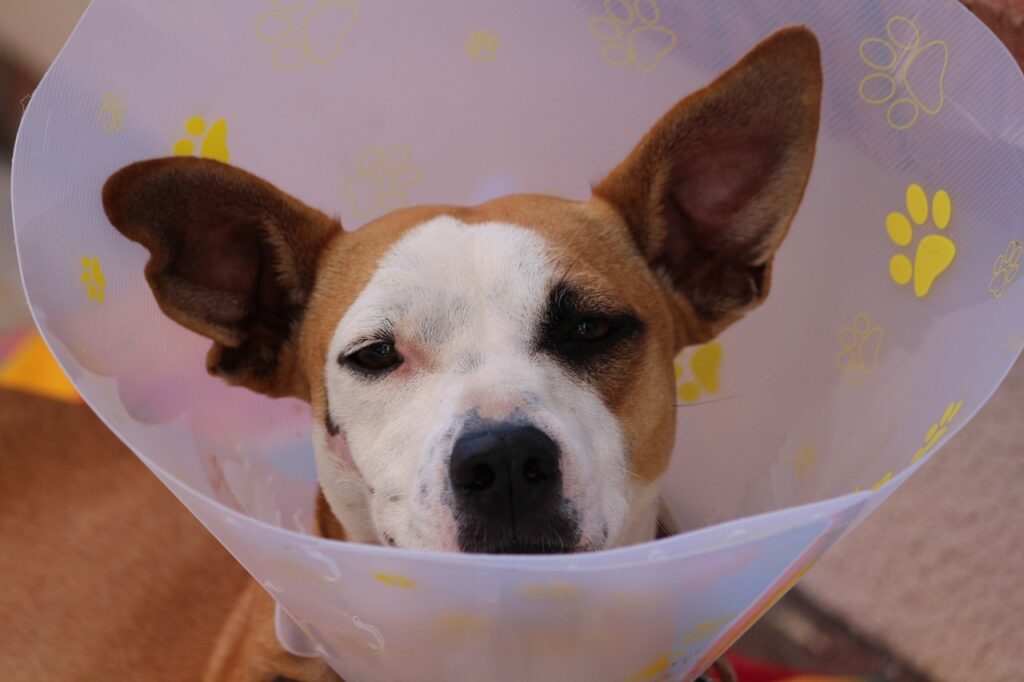
Picture this: you and your furry friend are out on a joyful adventure, exploring the great outdoors and making cherished memories. But what happens if, in the midst of all the excitement, your dog gets injured? It’s a scenario no pet owner ever wants to encounter, but it’s essential to be prepared. In this article, we’ll provide you with some valuable tips and advice on what steps to take if your beloved canine companion gets hurt during an activity. From assessing the severity of the injury to providing immediate first aid, we’ve got you covered, ensuring both you and your four-legged friend can continue to enjoy a life filled with adventures and unconditional love.
Assess the Situation
Stay calm and assess the situation
If your dog gets injured during an activity, the most important thing is to stay calm. Your dog can sense your stress, and it’s crucial to provide them with a calm and reassuring presence. Take a deep breath and assess the situation to determine the best course of action. Panicking will only make it difficult to think clearly and take effective measures to help your dog.
Check if your dog is conscious and breathing
The first step in assessing your injured dog is to determine if they are conscious and breathing. Approach your dog slowly and gently call their name. Observe their response and check for any signs of movement or breathing. If your dog is unconscious or not breathing, you will need to perform CPR immediately. This is a life-saving technique that can help restore your dog’s breathing and circulation until you can reach professional veterinary care.
Determine the severity of the injury
Once you’ve established that your dog is conscious and breathing, you need to determine the severity of the injury. Look for any visible wounds, bleeding, or signs of broken bones. If the injury appears severe or life-threatening, you should proceed with caution and avoid any further movement that could worsen the condition. Assessing the severity of the injury will help you prioritize the appropriate first aid measures and determine the urgency of contacting your veterinarian.
Administer First Aid
Muzzle your dog if necessary
When dogs are in pain or injured, they may react by instinctively trying to protect themselves. Even the most gentle and well-behaved dog can bite if they feel threatened or scared. Therefore, it’s essential to muzzle your dog if necessary to ensure both their safety and yours. A makeshift muzzle can be created using a soft cloth or a leash. Wrap it around your dog’s snout and tie it behind their head, making sure it’s secure but not too tight to prevent breathing difficulties.
Apply direct pressure to stop bleeding
If your dog is bleeding, it’s important to act quickly and apply direct pressure to the wound to stop the bleeding. Use a clean cloth or sterile gauze pad and apply firm pressure to the injured area. If the bleeding is profuse or doesn’t stop after a few minutes of continuous pressure, you should seek immediate veterinary attention. Excessive bleeding can be life-threatening and requires professional medical intervention.
Immobilize any fractures or dislocations
If you suspect your dog has a fracture or dislocation, it’s crucial to immobilize the affected area to prevent further injury. You can use a splint or a makeshift stabilizer, such as rolled-up newspaper or a sturdy board. Carefully place it alongside the injured limb and secure it with bandages or cloth strips. Immobilizing the fracture or dislocation will help reduce pain and minimize the risk of additional damage during transportation or while awaiting veterinary care.
Clean and dress wounds
Proper wound care is essential to prevent infection and aid in the healing process. Carefully clean any visible wounds using a mild antiseptic solution or sterile saline. Gently remove any debris or foreign objects from the wound while avoiding excessive scrubbing. After cleaning, apply a clean dressing or sterile gauze pad to protect the wound from further contamination. Dressings should be changed regularly or as advised by your veterinarian to promote healing.
Handle your dog with care
When administering first aid to your injured dog, it’s crucial to handle them with utmost care and gentleness. Remember that your dog is in pain, and any sudden or rough movements can exacerbate their discomfort or cause additional injuries. When lifting or moving your dog, support their body properly and avoid putting pressure on the injured area. If your dog shows signs of distress or pain during any procedures, stop and reevaluate the situation. It’s always better to seek professional veterinary care if you’re unsure about your ability to provide the necessary first aid.

Contact Your Veterinarian
Call your vet immediately
After providing initial first aid to your injured dog, the next step is to contact your veterinarian immediately. Time is of the essence when dealing with injuries, and professional medical assistance is crucial for accurate diagnosis and appropriate treatment. Inform the veterinary clinic or hospital about the nature of the injury, the current condition of your dog, and any first aid measures you’ve already taken. This will help the veterinarian assess the situation better and provide you with guidance on the next steps to take.
Provide detailed information about the injury
When speaking to your veterinarian, it’s important to provide as much detailed information as possible about the injury. Describe the incident that led to the injury, any observable symptoms or changes in behavior, and any first aid measures you’ve administered. This information will assist the veterinarian in making a swift and accurate diagnosis, potentially avoiding unnecessary tests or procedures. Be honest and forthcoming with your veterinarian to ensure the best possible care for your injured dog.
Follow any guidance given by your vet
Your veterinarian is a trusted professional who has the expertise and experience to guide you through your dog’s injury and recovery. Follow their instructions and recommendations closely. This may include scheduling an immediate appointment, providing further first aid measures, or bringing your dog directly to the clinic for further assessment. Your veterinarian may also advise on pain management, medication, or at-home care instructions. By following their guidance, you can help support your dog’s healing process and ensure the best possible outcome.
Transport Your Dog Safely
Decide on the appropriate mode of transport
When it comes to transporting your injured dog, it’s important to consider their condition and the severity of the injury. If your dog is stable and the injury is minor, you may be able to transport them in your vehicle with the help of a suitable carrier or crate. However, if the injury is severe or your dog is in critical condition, it’s advisable to call your veterinarian or local animal ambulance for assistance. They will have the necessary equipment and expertise to transport your dog safely and quickly to the veterinary clinic.
Use a suitable carrier or stretcher
If you’re transporting your injured dog in your vehicle, it’s essential to use a suitable carrier or crate that provides comfort, security, and proper immobilization. The carrier should be large enough for your dog to lie down comfortably and should have good ventilation. Secure the carrier in your vehicle to minimize movement during transportation. If a carrier is not available, you can use a sturdy stretcher or a firm board to transport your dog. Make sure to immobilize the injured area using bandages or cloth strips to prevent further injury during transportation.
Secure your dog properly during transportation
Regardless of the mode of transport, it’s crucial to secure your dog properly to ensure their safety during transportation. If using a carrier or crate, ensure that it’s securely latched and won’t tip over or slide around in your vehicle. If using a stretcher or board, use firm but gentle restraints to prevent your dog from falling off or causing further injury. Avoid sudden braking or sharp turns during transportation, as this can cause discomfort or worsen your dog’s condition. Your dog’s safety should always be the top priority.

Prevent Further Injury
Avoid unnecessary movement
Once your injured dog is in a safe and comfortable environment, it’s important to minimize unnecessary movement. Any excessive movement can cause pain or further damage to the injured area. Encourage your dog to rest and restrict their activity to prevent them from aggravating the injury. If necessary, confine them to a small, comfortable space where they can rest without any potential hazards or opportunities for excessive movement.
Keep your dog warm and comfortable
Injured dogs can be more susceptible to temperature changes and discomfort. It’s important to ensure that your dog remains warm and comfortable during their recovery period. Provide soft bedding and blankets in their resting area to create a cozy and soothing environment. If your dog shows signs of shivering, you can also use a blanket or warm water bottle to create additional warmth. However, be cautious not to overheat your dog, as this can also be detrimental to their well-being.
Monitor vital signs
Monitoring your dog’s vital signs is essential to assess their overall condition and identify any potential complications. Regularly check their heartbeat, respiratory rate, and body temperature. Consult with your veterinarian on the normal ranges for these vital signs, as they may vary depending on the breed and size of your dog. Any sudden changes or abnormalities in vital signs should be reported to your veterinarian immediately. By closely monitoring these signs, you can detect any potential emergencies early on and seek appropriate veterinary care.
Prevent licking or chewing of wounds
Injured dogs may have a natural instinct to lick or chew on their wounds, which can impede the healing process and increase the risk of infection. To prevent your dog from licking or chewing their wounds, you can use an Elizabethan collar, also known as a cone collar or “cone of shame.” This collar typically fits around your dog’s neck and prevents them from reaching their wounds with their mouths. Additionally, you can monitor your dog closely and redirect their attention using toys or treats whenever they show signs of attempting to lick or chew their wounds.
Support Your Dog’s Recovery
Follow your vet’s instructions for medication
Your veterinarian may prescribe medication to help manage your dog’s pain and promote a speedy recovery. It’s important to follow their instructions precisely when administering the medication. Pay attention to the dosage, frequency, and duration of the prescribed medication. Some medications may require you to give them with food, while others may need to be administered on an empty stomach. Never alter the recommended dosage or stop the medication without consulting your veterinarian first.
Provide a quiet and calm environment
During your dog’s recovery, it’s important to provide them with a quiet and calm environment. Excessive noise, activity, or stress can hinder their healing process and increase their anxiety. Create a designated area in your home where your dog can rest and recover without any disturbances. Dim the lights, play soft, soothing music, and minimize any loud noises. If you have other pets or young children, ensure that they understand the need for a calm and quiet environment and limit their interactions with the injured dog.
Offer appropriate nutrition and hydration
Proper nutrition plays a crucial role in your dog’s recovery process. Consult with your veterinarian to determine the most appropriate diet for your injured dog. They may recommend specific types of food or dietary supplements that can aid in the healing process and support their overall health. Ensure that your dog has access to fresh water at all times to prevent dehydration, which can adversely affect their recovery. Avoid offering your dog any table scraps or foods that may be harmful or disrupt their dietary recommendations.

Recognize Signs of Emergency
Be aware of signs that require immediate veterinary attention
While you’re providing care for your injured dog, it’s essential to be aware of signs that indicate an emergency. Some of these signs may include:
- Difficulty breathing or panting excessively
- Pale or bluish gums
- Rapid heartbeat or irregular pulse
- Seizures or convulsions
- Inability to urinate or defecate
- Severe pain or discomfort
- Unresponsiveness or loss of consciousness
If you observe any of these symptoms or any other behaviors that concern you, it’s crucial to seek immediate veterinary attention. These signs may indicate a life-threatening condition that requires urgent medical intervention.
Seek emergency care if necessary
In certain situations, you may need to seek immediate emergency care for your injured dog. If your dog experiences severe bleeding that doesn’t stop with direct pressure, difficulty breathing, or obvious signs of severe pain, performing CPR, or contacting your veterinarian may not be enough. Contact your local veterinary emergency clinic or animal hospital and inform them about the situation. They will advise you on the best course of action and may ask you to bring your dog in immediately for urgent treatment.
Provide Emotional Support
Comfort and reassure your dog
In addition to physical care, providing emotional support is crucial for your dog’s well-being during their recovery process. Dogs can experience stress, anxiety, and fear as a result of their injury. Comfort and reassure your dog by offering gentle touch, soothing words, and a comforting presence. Spending quality time with your dog, engaging in activities they enjoy (that don’t worsen their injury), and providing positive reinforcement can help alleviate their stress and promote a sense of emotional well-being.
Monitor for any behavioral changes
Injury and the associated pain can sometimes cause changes in your dog’s behavior. They may be more irritable, exhibit signs of depression or anxiety, or become less interested in activities they previously enjoyed. It’s important to closely monitor your dog’s behavior throughout the recovery process and report any significant changes to your veterinarian. Behavioral changes can sometimes indicate underlying issues that require further attention or adjustments to their treatment plan.
Take Steps to Prevent Injuries
Ensure appropriate supervision during activities
Prevention is always better than cure when it comes to dog injuries. Ensure appropriate supervision during activities to minimize the risk of accidents or injuries. If your dog is participating in activities such as hiking, swimming, or playing with other dogs, closely monitor their interactions and surroundings. Be aware of any hazards or potential sources of danger that could put your dog at risk. Supervision is particularly crucial for puppies, senior dogs, and those with known health conditions that may make them more susceptible to injuries.
Use safety equipment such as harnesses or protective gear
Depending on the activity and the potential risks involved, it may be necessary to use safety equipment for your dog. Harnesses, life jackets, and protective gear such as booties or elbow/knee pads can provide an additional layer of safety and minimize the risk of injuries. Consult with professionals or experienced dog trainers to determine the appropriate safety equipment that suits your dog’s specific needs and activities.
Avoid high-risk activities for your dog’s breed or condition
Different dog breeds have varying levels of physical capabilities and predispositions to certain health conditions. It’s important to be aware of these factors and avoid engaging your dog in high-risk activities that could potentially harm them. For example, short-nosed breeds are more prone to heat stroke and respiratory issues, so they should not be exposed to excessive heat or strenuous exercise in hot weather. Similarly, dogs with hip dysplasia or joint problems may have limitations on activities such as jumping or prolonged running. Understanding your dog’s breed and individual needs will help you make informed decisions about the activities they can safely participate in.
Stay Informed and Prepared
Enroll in pet first aid and CPR courses
One of the best ways to be prepared for a dog injury is by enrolling in pet first aid and CPR courses. These courses provide valuable knowledge and skills that can help you assess and respond to a wide range of injuries or emergencies. You’ll learn about proper wound care, how to perform CPR, and other life-saving techniques. By equipping yourself with this knowledge, you can confidently and effectively assist your injured dog until professional veterinary care is available.
Create a first aid kit for your dog
Having a well-stocked first aid kit specifically designed for your dog is essential for prompt and effective care. Your first aid kit should include items such as sterile gauze pads, bandages, antiseptic solution, adhesive tape, tweezers, and disposable gloves. Additionally, include any prescribed medications or ointments recommended by your veterinarian. Keep the first aid kit easily accessible and regularly check the inventory to ensure all supplies are up-to-date and not expired.
Stay up to date with regular veterinary check-ups
Regular veterinary check-ups are crucial for maintaining your dog’s overall health and well-being. These check-ups allow your veterinarian to monitor your dog’s condition, detect any potential health issues, and provide necessary preventive care. By staying up to date with these check-ups, you can address any underlying conditions that may predispose your dog to injuries or worsen their recovery time. Regular visits to the vet also provide an opportunity to seek guidance on injury prevention specific to your dog’s individual needs and lifestyle.
In conclusion, if your dog gets injured during an activity, it’s important to stay calm, assess the situation, and take appropriate measures to provide first aid. Contact your veterinarian for professional guidance, transport your dog safely, and take steps to prevent further injury. Supporting your dog’s recovery with proper care, nutrition, and emotional support is essential. By being informed, prepared, and proactive, you can help ensure the well-being and safety of your beloved canine companion.

